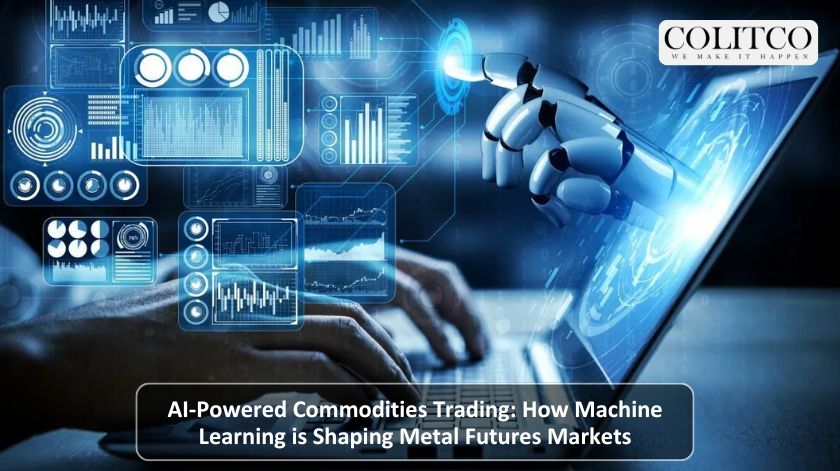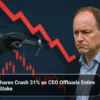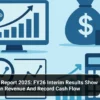Something remarkable is unfolding in trading floors across Sydney, New York and London. Algorithms now execute trades in milliseconds, analyse millions of data points simultaneously, and predict market movements with accuracy that seemed impossible just five years ago.
The metal futures markets are experiencing their biggest transformation since electronic trading replaced open outcry pits. Machine learning systems process everything from satellite imagery of copper mines to central bank speeches, converting raw data into trading signals faster than any human could manage.
This isn’t science fiction. It’s happening right now.
How Machines Learned to Trade Metals
Traditional commodity trading relied on experience, gut instinct and fundamental analysis. Traders studied supply-demand dynamics, geopolitical events and economic indicators to make decisions.
Machine learning flipped that model completely.
Modern AI systems ingest vast datasets including:
- Historical price patterns spanning decades
- Real-time satellite imagery of mining operations
- Social media sentiment from millions of posts
- Central bank policy statements and speeches
- Weather patterns affecting production
- Shipping data and inventory levels
These systems identify patterns humans miss entirely, processing market data and historical trends to predict commodity prices with increasing precision. The technology has evolved beyond simple pattern recognition into sophisticated predictive modelling.
Natural language processing tools analyse commonly used trading language and learn trader behaviour patterns quickly, translating keywords and phrases into actionable data for deal capture systems.
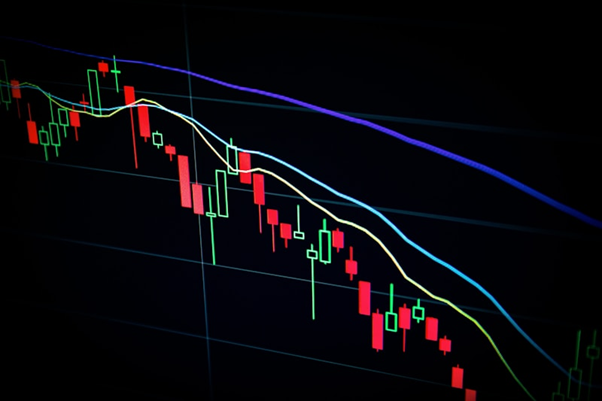
AI-powered trading systems monitor multiple data sources simultaneously
Three Core Technologies Reshaping Metals Trading
Predictive Modelling: Reading Market Tea Leaves
Machine learning models including Random Forest, Gradient Boosted Regression Trees and XGBoost have demonstrated strong performance forecasting gold and other precious metal prices, with deep learning methods like LSTM and CNN-LSTM networks showing particular promise.
These models don’t just look at price history. They incorporate dozens of variables simultaneously.
Research shows one-day lagged data from major stock indices like the ASX, S&P500 and others, combined with US and Japan bond yields and delayed data from gas and silver markets, significantly influence gold price predictions.
The Australian copper market has seen similar applications, with algorithms tracking everything from Chinese industrial production to electric vehicle sales forecasts.
Sentiment Analysis: The Market’s Emotional Intelligence
Markets don’t trade on fundamentals alone. Emotion drives significant price action, particularly during volatile periods.
Natural language processing systems analyse news articles, social media posts and other textual data sources to gauge market sentiment and predict its impact on commodity prices. This capability allows traders to quantify previously qualitative information.
When a central bank governor hints at policy changes, NLP tools interpret the tone instantly. These systems analyse speeches and statements to predict market reactions, providing traders with critical insights into how narratives affect forex and commodity markets.
The speed advantage is substantial. Human analysts might take hours to digest a lengthy policy statement. AI systems process it in seconds.
Anomaly Detection: Spotting What Doesn’t Fit
Markets occasionally behave irrationally. Flash crashes, manipulation attempts and technical glitches create price anomalies that can devastate unprotected positions.
AI systems assist with detection and prevention of frauds and scams, analysing network traffic, preventing data leakage, segmenting customers by risk profile, prioritizing alerts and investigating suspicious activity.
This capability extends beyond fraud detection into market surveillance. Systems flag unusual trading patterns, correlation breakdowns and liquidity anomalies that might signal broader problems.
Real-World Applications: Where Theory Meets Practice
Case Study: Precious Metals Trading
Research into algorithmic trading of gold, silver, platinum, palladium and copper using RSI and Keltner Channel strategies optimised with Particle Swarm Optimization delivered impressive results, with systems generating 106.2% excess returns for gold, 63.7% for silver, and 326.3% for palladium compared to buy-and-hold strategies.
These aren’t theoretical backtests. They represent actual trading results from 2020-2021.
The success demonstrates how properly configured machine learning systems can identify profitable trading opportunities across multiple precious metals simultaneously.
Australian gold miners and traders have begun adopting similar technologies, recognising the competitive disadvantage of staying purely manual.
Energy Metals: The Electrification Play
AI-driven algorithms analyse vast data volumes to identify market trends and make accurate predictions about energy commodity price movements, while also optimising energy storage and distribution to create more efficient markets How Does the AI Boom Affect Commodities? | Paradigm Futures.
The critical minerals sector relies heavily on these insights. Lithium, rare earths and battery metals exhibit complex supply-demand dynamics that AI systems model effectively.
AI technologies significantly impact agricultural commodities by enhancing farming operation efficiency through precision farming and automated machinery, while also driving demand for metals like copper, lithium and rare earth elements essential for data centers, AI-driven machines and electric vehicles How Does the AI Boom Affect Commodities? | Paradigm Futures.
High-Frequency Trading in Base Metals
Copper, zinc and aluminium markets have embraced algorithmic trading more rapidly than precious metals. The higher liquidity and tighter spreads make them ideal for high-frequency strategies.
Modern cloud-native platforms simulate all risk factors, optimise portfolio decisions, and include dynamic reports and dashboards for better decision-making across power, natural gas, crude oil, renewables, biofuels, liquids, metals, agricultural products and foreign exchange futures.
These systems execute thousands of trades daily, capitalising on tiny price discrepancies across different exchanges and contract months.
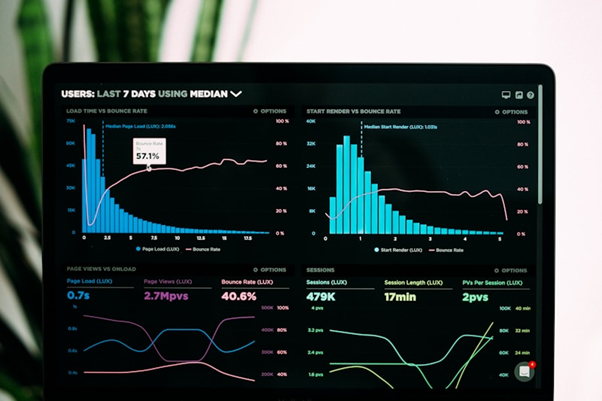
High-frequency trading algorithms identify arbitrage opportunities in milliseconds
The Dark Side: Risks Nobody Talks About
Overfitting: When Models Know Too Much
Overfitting describes when models give accurate outputs for training data but fail to generalise for new or unseen data, particularly problematic when training datasets lack sufficiently diverse samples or contain irrelevant information.
This represents one of AI trading’s most insidious dangers. A model might perform brilliantly during backtesting but fail catastrophically in live markets.
Models trained on historical regimes can mistake random fluctuations for causal patterns, leading to overfitting that manifests as catastrophic real-world drawdowns ai trading bots in 2025: chasing profits, weighing risks.
The 2020 COVID-19 market crash exposed numerous overfit trading models. Systems trained on relatively stable 2015-2019 data couldn’t adapt to the unprecedented volatility.
Black Swan Events: When History Doesn’t Repeat
Black Swan events are unpredictable and beyond regular expectations, making them inherently challenging for AI which relies on historical data and established patterns, as these events don’t follow past trends.
No amount of historical data prepares algorithms for truly unprecedented events. The March 2020 crash, the 2008 financial crisis, and earlier market dislocations all caught sophisticated trading systems off-guard.
Machine learning performs well when future data is similar to training data, but as that similarity disappears, the model’s learned lessons become less relevant and its ability to reason correctly about new data diminishes.
ASX miners experienced this firsthand during pandemic-era market disruptions, with algorithmic trading systems generating unexpected losses during extreme volatility.
Data Quality: Garbage In, Garbage Out
Data issues include potential mishandling of sensitive information including personally identifiable information within AI systems, fairness concerns where systems might reproduce or compound biases encountered in training data, and concentration risks from relying on small numbers of deep learning architectures.
Poor data quality corrupts even the most sophisticated algorithms. Missing data points, incorrect timestamps, survivor bias and reporting errors all degrade model performance.
There are issues with data poisoning of real-world sources encountered by AI models during deployment, along with potential mishandling of sensitive data.
Concentration Risk: Too Many Similar Strategies
Exchange-level surveillance detects suspicious emergent patterns indicative of collusion or market manipulation, with programmatic safeguards monitoring cross-actor correlations and raising alerts when anomalous concentration appears.
When multiple AI systems learn similar patterns from similar data, they tend to trade similarly. This creates crowding that can amplify market moves and trigger flash crashes.
The infamous May 2010 Flash Crash demonstrated how algorithmic trading can create destructive feedback loops when systems interact in unexpected ways.
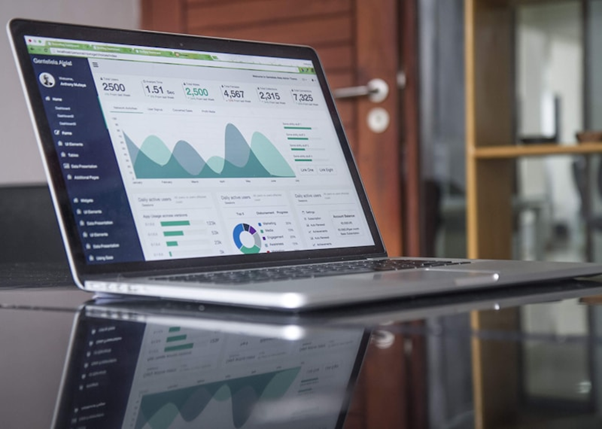
Risk management systems monitor algorithmic trading for signs of malfunction
Regulatory Response: Playing Catch-Up
IOSCO members identified cybersecurity, data privacy and protection, fraud, market manipulation, and deepfakes as among the most cited AI-related risks to investor protection and financial markets.
Regulators worldwide are scrambling to understand and oversee algorithmic trading. The challenge is significant–technology evolves faster than regulatory frameworks.
IOSCO published six measures reflecting expected standards of conduct by market intermediaries and asset managers using AI, acknowledging that regulatory frameworks may need to evolve in tandem with advancing AI technologies.
Key regulatory concerns include:
- Market manipulation through coordinated algorithms
- Flash crash prevention and circuit breakers
- Transparency requirements for trading algorithms
- Liability when AI systems make errors
- Data privacy and protection standards
Australian regulators have taken a relatively pragmatic approach, monitoring developments while avoiding overly restrictive rules that might stifle innovation.
The US Commodity Futures Trading Commission released comprehensive guidance on AI trading systems in 2024, establishing baseline expectations for risk management and oversight.
Ethical Considerations Nobody Wants to Discuss
Fairness and Market Access
Algorithmic bias is a primary concern, where AI systems trained on historical data may inadvertently perpetuate existing prejudices, leading to unfair outcomes and requiring meticulous data selection and ongoing monitoring.
Large institutional players can afford sophisticated AI systems that retail traders cannot access. This creates a two-tier market where technological advantages become increasingly important.
The democratization of AI tools through cheaper cloud computing has narrowed this gap somewhat, but significant disparities remain.
Transparency and Explainability
Transparency and explainability are crucial, as stakeholders must understand how AI systems arrive at certain decisions to build trust and enable accountability.
Black box algorithms that can’t explain their decisions create problems. When a trading system loses millions on a single position, understanding why becomes critical.
Marketplace operators might require sellers of strategy templates to disclose assumptions and show out-of-sample performance, while implementing automated monitoring layers to observe cross-actor correlations.
Accountability When Things Go Wrong
When AI systems make mistakes, it’s often unclear who is responsible—the designers, the users, or the AI itself, raising complex accountability questions.
This ambiguity creates legal and ethical challenges. If an algorithm causes a flash crash that wipes out billions in market value, who bears responsibility?
The absence of clear accountability frameworks leaves this question largely unanswered.
The Future: What’s Coming Next
Hybrid Human-AI Systems
Rather than fully autonomous trading, the fastest-growing segment involves collaborative platforms where AI handles data processing and pattern recognition while humans maintain strategic oversight.
Pure automation remains elusive. The most successful implementations combine algorithmic precision with human judgment, particularly during unusual market conditions.
Trading organisations are exploring how to manage a workflow with both human and synthetic workforces, determining which interfaces can be machine-to-machine and which activities and decisions should involve humans.
Integration with Blockchain
Blockchain technology can complement AI in trading by increasing transparency and security, with its decentralised nature reducing fraud risk and offering transparent ledgers of all transactions.
Smart contracts combined with AI decision-making could automate significant portions of the trading lifecycle while maintaining transparency and auditability.
Quantum Computing: The Next Frontier
While still largely theoretical, quantum computing promises to revolutionise financial modelling. The ability to process exponentially more calculations simultaneously could unlock entirely new trading strategies.
Current AI systems run on classical computers with inherent limitations. Quantum systems might eliminate many of these constraints.
Practical Implications for Market Participants
For Institutional Traders
Major financial institutions are increasingly integrating AI into trading operations, with 65% of hedge funds now using some form of machine learning, while North America accounts for 37.2% of global AI trading software market revenue.
Institutions must invest heavily in technology infrastructure, data quality and talent to remain competitive. The alternative is falling behind technologically superior competitors.
Risk management frameworks need updating to account for algorithmic trading risks, including stress testing under extreme scenarios and maintaining human oversight capabilities.
For Retail Investors
AI trading platforms in 2025 deliver benefits including lightning-fast execution, emotion-free decisions, 24/7 market monitoring, and the ability to process vast amounts of data that would overwhelm human analysts.
Retail traders increasingly access institutional-grade tools through democratised platforms. However, understanding these tools’ limitations remains crucial.
Blind faith in algorithmic systems without comprehending their underlying logic creates dangerous false security.
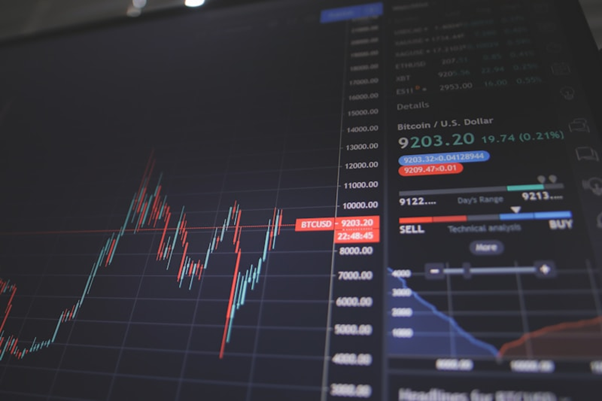
Modern traders combine AI insights with human judgment
For Mining Companies
Base metal producers benefit from more efficient price discovery and hedging opportunities as AI improves market liquidity and reduces bid-ask spreads.
Understanding how algorithms influence their products’ markets helps miners make better hedging decisions and negotiate more favourable offtake agreements.
The copper sector particularly benefits from algorithmic trading’s efficiency gains, with tighter spreads reducing hedging costs.
Building Robust AI Trading Systems
Robust model design moves beyond validation on historical splits to include stress-testing under adversarial conditions, scenario simulation and continuous retraining pipelines, combining rule-based fallback systems with adaptive models.
Best practices include:
- Ensemble approaches: Diversify model families to reduce correlated failures
- Human-in-the-loop: Trigger manual intervention thresholds for large deviations
- Adversarial testing: Inject synthetic shocks and measure response
- Continuous monitoring: Track model performance in real-time
- Version control: Maintain reproducible pipelines for debugging
Operational readiness requires reproducible pipelines with version control for datasets, model artifacts and execution code to ensure rollbacks and debugging remain feasible.
Cybersecurity represents a critical concern. Systems should implement strict access controls and transaction signing to prevent unauthorised order injection, with attackers targeting trading endpoints potentially causing financial loss and reputational damage.
Market Structure Changes
The proliferation of AI trading has fundamentally altered market microstructure. Bid-ask spreads have compressed, liquidity has improved during normal conditions, and execution costs have fallen.
However, markets also experience occasional liquidity vacuums when algorithms simultaneously withdraw. These events, though rare, can be spectacular when they occur.
AI is transforming how energy commodities are traded, with algorithms analysing data to make accurate predictions about future price movements and optimising energy storage and distribution.
Volume patterns have changed dramatically. More trading occurs outside traditional market hours as AI systems operate continuously. This creates challenges for traders relying on conventional session-based analysis.
Measuring Success: Performance Metrics That Matter
Traditional performance metrics like Sharpe ratios and maximum drawdown remain relevant, but AI trading requires additional considerations:
- Model accuracy drift: How quickly does performance degrade?
- Execution slippage: Are orders being filled as expected?
- Data quality scores: Is input data maintaining standards?
- Adversarial resilience: How does the system handle attacks?
- Computational efficiency: Are resources being used optimally?
Continuous evaluation prevents degradation from going unnoticed. Systems require regular retraining and recalibration to maintain effectiveness.
The Skills Gap: What Traders Need Now
The convergence of finance and technology creates demand for professionals with hybrid skill sets. Pure traders lack technical depth; pure technologists lack market intuition.
Modern commodity traders need:
- Programming skills (Python, R, SQL)
- Statistical and machine learning knowledge
- Market microstructure understanding
- Risk management expertise
- Communication abilities to explain technical concepts
Educational institutions are struggling to keep pace. Most university programmes focus on either finance or computer science, rarely integrating both comprehensively.
Looking Ahead: 2025 and Beyond
AI technology advances including machine learning and natural language processing are expected to change commodity trading through predictive analytics examining historical trends and market indications, with automated trading systems executing deals at optimal times using AI algorithms.
The technology will continue evolving rapidly. Each year brings capabilities that seemed impossible previously. Quantum computing, neuromorphic processors and other emerging technologies will further accelerate this trend.
However, human judgment won’t become obsolete. The most successful market participants will combine technological sophistication with fundamental market understanding.
Markets remain, at their core, mechanisms for price discovery reflecting collective human judgment about the future. Technology changes how that judgment forms and acts, but doesn’t eliminate the underlying human element.
Also Read: The Rare Earths Race: Who Controls the Future of Tech & Clean Energy Supply Chains
Frequently Asked Questions
1.What is AI-powered commodity trading?
AI-powered commodity trading uses machine learning algorithms to analyse market data, predict price movements, and execute trades automatically based on identified patterns and signals.
2.How accurate are AI predictions for metal futures?
Accuracy varies significantly based on market conditions, data quality and model design. Research shows properly configured systems can outperform traditional methods by 20-40% in stable conditions, but may struggle during unprecedented events.
3.Can retail traders access AI trading tools?
Yes, cloud-based platforms now offer institutional-grade AI tools to retail traders at affordable prices. However, understanding these tools’ limitations and proper risk management remains essential.
4.What’s the biggest risk of algorithmic trading?
Overfitting represents the most insidious risk—models performing excellently on historical data but failing catastrophically on new market conditions. Black swan events also pose significant challenges.
5.How do regulators view AI trading?
Regulators globally are developing frameworks to oversee algorithmic trading while avoiding overly restrictive rules. Focus areas include market manipulation prevention, transparency requirements and systemic risk management.
6.Will AI replace human traders?
Unlikely in the foreseeable future. The most successful implementations combine AI capabilities with human oversight, particularly for strategic decisions and unusual market conditions.
7.How much does AI trading infrastructure cost?
Costs range from under $100 monthly for cloud-based retail platforms to millions annually for institutional-grade systems requiring custom development, dedicated infrastructure and specialised talent.
8.What metals are most suitable for algorithmic trading?
Highly liquid markets like gold, copper, and silver work best due to tight spreads and deep liquidity. Less liquid metals require careful algorithm design to avoid excessive market impact.

